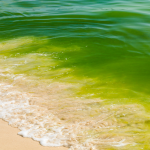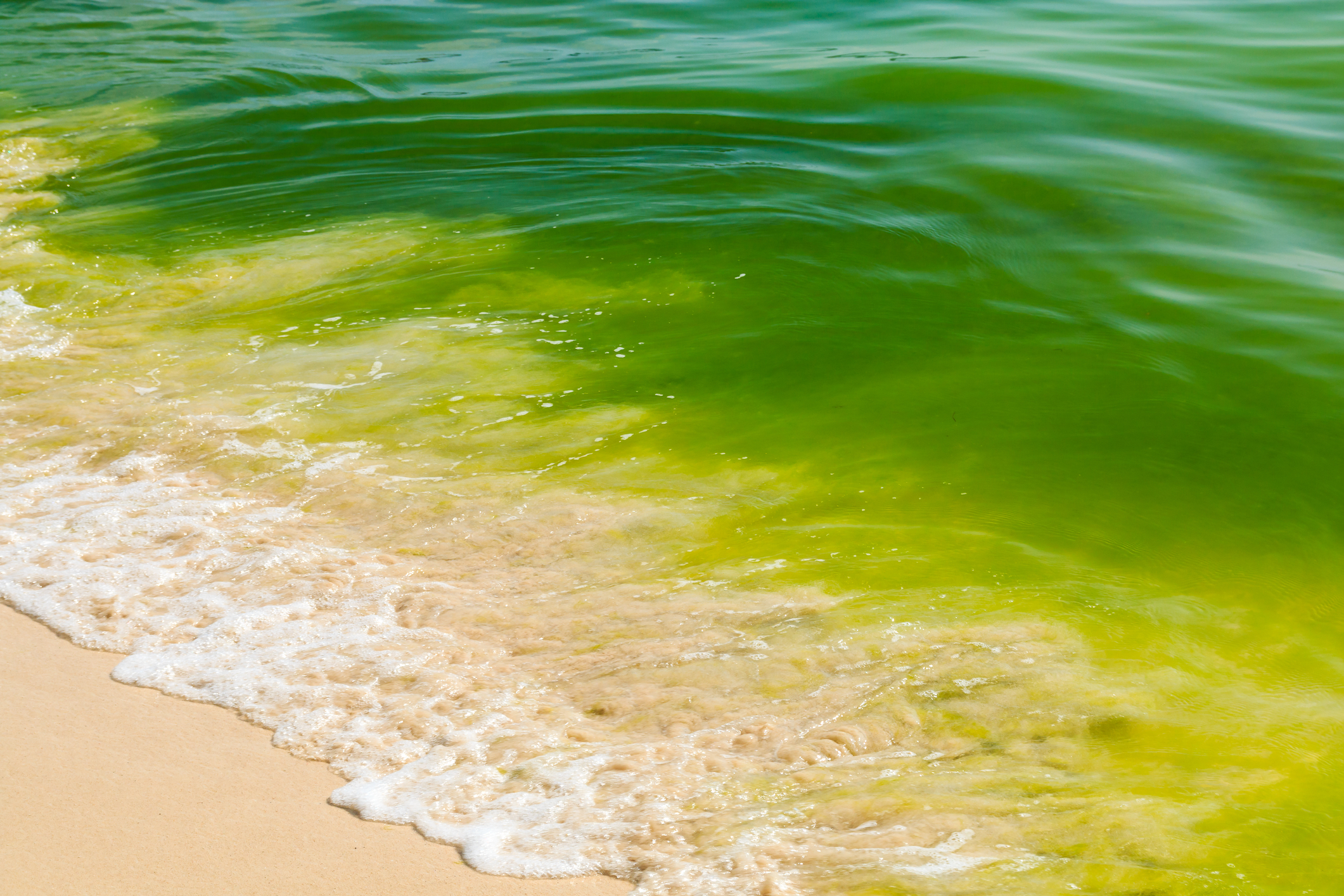 So what would you do upon waking one morning with coffee in hand, you turn on the news, and the reporter informs you that your water isn’t safe to drink because it could be toxic. Well, you’d probably start by dumping out that cup of joe and doing what the other 499,999 people impacted by this vicious attack on your drinking water source would be doing. You’d rush off to the store to purchase whatever water remained on the shelf. So goes the story this morning in many towns across Ohio, including Toledo, who are reliant upon Lake Erie for their water and are unable to use it. No, this isn’t some terrorist plot, but rather the work of cyanobacteria (blue-green algae) that have formed a harmful algal bloom (commonly referred to as HABs for short). LA Times story here by James Queally, Toxic Ohio tap water tested as 500,000 residents wait and D’Arcy Egan here in the Plain Dealer, Algal bloom shuts off water, but green slime limited so far to Toledo.
So what would you do upon waking one morning with coffee in hand, you turn on the news, and the reporter informs you that your water isn’t safe to drink because it could be toxic. Well, you’d probably start by dumping out that cup of joe and doing what the other 499,999 people impacted by this vicious attack on your drinking water source would be doing. You’d rush off to the store to purchase whatever water remained on the shelf. So goes the story this morning in many towns across Ohio, including Toledo, who are reliant upon Lake Erie for their water and are unable to use it. No, this isn’t some terrorist plot, but rather the work of cyanobacteria (blue-green algae) that have formed a harmful algal bloom (commonly referred to as HABs for short). LA Times story here by James Queally, Toxic Ohio tap water tested as 500,000 residents wait and D’Arcy Egan here in the Plain Dealer, Algal bloom shuts off water, but green slime limited so far to Toledo.
A half-million have been told not to drink the water because it contains elevated levels of biotoxins (or microcystins to be more precise). Beach-goers may also be familiar with the work of similar bacteria that causes red tides, killing fish and prompting closure of shell fishing along impacted beaches. In fact, there is a major red tide currently creating havoc along Florida’s Gulf Coast estimated to be 80 miles long and 50 miles wide. While cyanobacteria are very common in nature and have existed on earth for millions of years, we have indeed witnessed a sharp uptick in recent years to these types of harmful outbreaks due to a number of factors, including increased loading of nitrogen and phosphorus into waterways (from too much fertilizers and animal and human sewage) and changes in water flow, thermal mixing zones, and chemistry due to drought and changing climate patterns.
But here’s the kicker with HABs, once the toxins are detected in your drinking water, it’s too late to respond. Aggressive treatment with more chlorine or hot water only makes these little suckers angrier, causing them to release even more of their toxins (actually the real scientific explanation is that treatment causes the cell wall of the bacteria to breakdown which releases all of the toxins). So the only real solution is to prevent these types of HAB outbreaks from occurring in the first place.
You can read more about HABs here at EPA, which has significantly increased its focus on this emerging issue and risk to human health. There are very few scientists with expertise in understanding the causes and solutions to respond to these outbreaks. The agency is fortunate to have the resident expertise of Dr. Lesley D’Anglada, who is one of the most knowledgeable scientists in this area. Lesley, who has worked tirelessly with the states and communities over the last several years to better educate the public on this emerging issue, was very helpful to me and United Water a couple of years ago when we experienced a HABs outbreak in a small water system in New Jersey (fortunately, no one got sick since UW took prompt action to notify the public and work with EPA and NJDEP). In 2011, a similar outbreak in a popular lake in Oklahoma caused Senator Inhofe and his family to get sick, after they went for a summer swim. Story here at Conservation Law Foundation blog and NPR. Yet these HAB outbreaks are being documented with greater frequency as temperatures continue to warm. See 2013 Scientific American report here.
So the only real solution is to prevent these types of HAB outbreaks from occurring in the first place. More here at EPA on controlling the source water imbalances. Small lakes and reservoirs can be more easily monitored and treated when pre-cursors to HABs begin to develop, e.g., application of copper sulfate and physical removal of floating algal mats, but such measures aren’t practicable on such a large body of water like Lake Erie. Increasingly, the public needs to be aware of this increasing phenomena and the health risks, and communities will need to better manage those factors over which they have control – primarily excess nutrients – since we haven’t yet mastered the art of controlling weather and rainfall.

